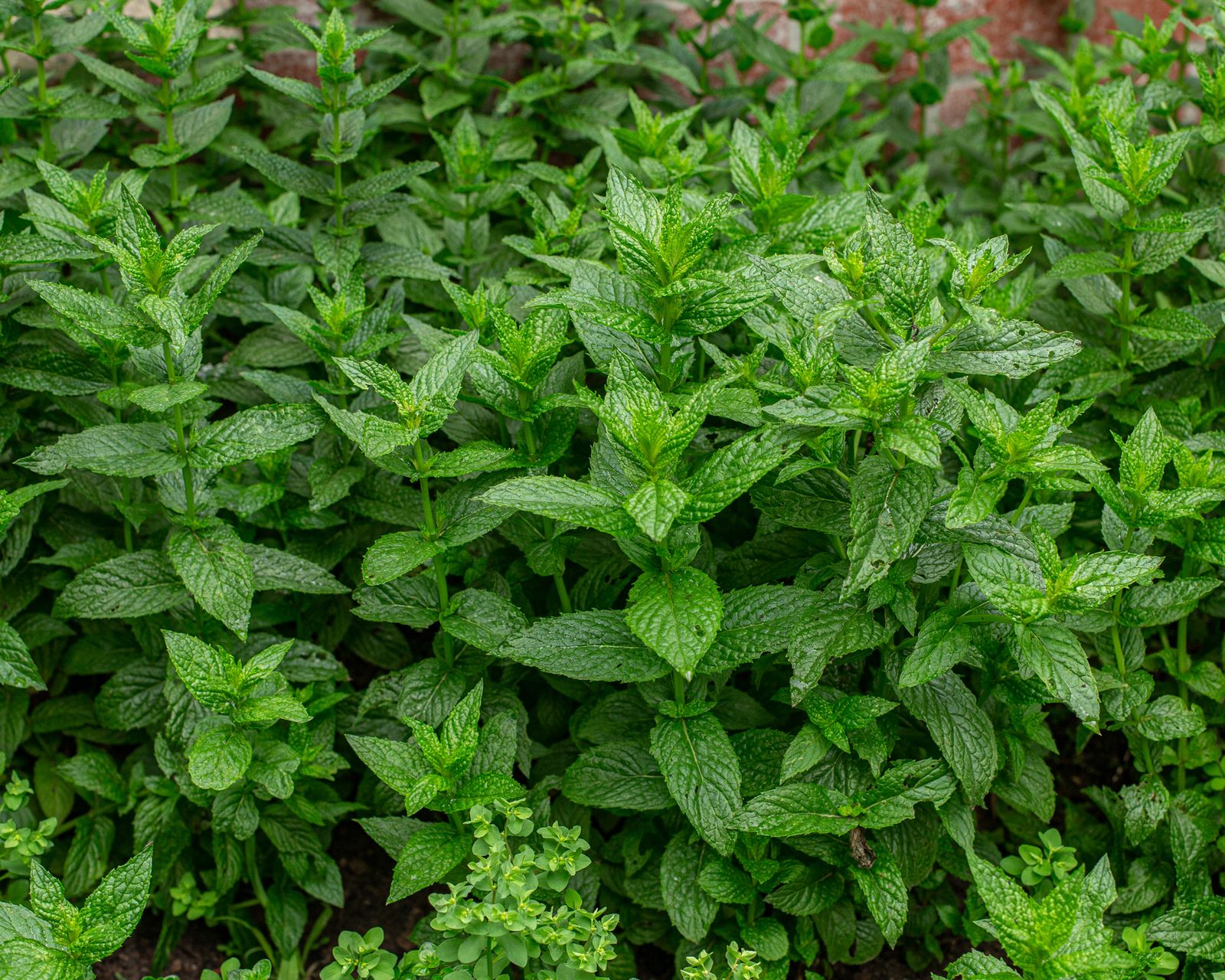Mint is a popular herb that many gardeners grow for its fragrant leaves and culinary uses. However, mint’s aggressive spreading habit can quickly turn this useful plant into a nuisance. So is mint invasive? The simple answer is yes – mint is considered an invasive plant in gardens and landscapes. In this article, we’ll look at why mint spreads so readily, the best mint species for planting, and effective ways to control mint’s growth and invasiveness.
Why is Mint Invasive?
All mints (members of the Mentha genus) spread rapidly via rhizomes – underground stems that creep horizontally just below the soil surface As the rhizomes grow, they send up new leafy shoots A small mint plant introduced into your garden can eventually colonize a very large area through this creeping root system.
Mint rhizomes can spread several feet per year. Their growth is difficult to control because new shoots pop up unpredictably and any small root fragments left behind can resprout into new plants. This invasive spreading habit makes mint notoriously hard to eradicate from gardens once established.
Which Mint Varieties Are Most Invasive?
While all mints spread through rhizomes some varieties are particularly aggressive colonizers. Spearmint (Mentha spicata) apple mint (Mentha suaveolens) and creeping water mint (Mentha aquatica) are especially notorious for their invasiveness. Peppermint (Mentha x piperita) is only marginally less invasive.
Even small sections of stems or crushed leaves from these mints can take root very easily. Their lightweight seeds also allow the plants to spread beyond their original planting sites.
Will Mint Take Over My Garden?
If left unchecked, invasive mint varieties can certainly take over large areas of your garden. However, you can grow mint without letting it run rampant by using controlled planting methods:
-
Plant mints in containers sunk in the ground – this restricts root spread. Make sure containers have drainage holes.
-
Surround containers with vertical barriers, either burying metal sheeting at least 8 inches deep or using pool liner material.
-
For in-ground planting, sink a bottomless bucket or other open-ended barrier around the mint to contain it.
-
Keep the mint patch isolated from other garden beds. Avoid planting mint near vulnerable areas.
-
Cut off flowering stems to prevent self-seeding of mint plants.
-
Aggressively prune back mint’s top growth and dig out encroaching rhizomes.
Effective Ways to Control Invasive Mint
If mint has already escaped its bounds in your garden, don’t despair. Here are some effective control methods:
Manual Removal
-
Dig up all visible mint plants, removing as much of the roots and rhizomes as possible. Repeat frequently to control regrowth.
-
Smother small areas of mint growth with mulch, yard waste or weighted-down tarps to block light and kill the plants.
-
For large mint infestations, solarize the area under clear plastic in hot, sunny weather to bake and kill plants/roots.
Herbicides
-
For best results, apply a glyphosate non-selective herbicide (like Roundup) directly to mint leaves in late summer/fall. Avoid spraying near desired plants.
-
Mix a small amount of dish soap (1-2 tsp per gallon) with the herbicide for better leaf coverage. Re-treat regrowth.
-
Take safety precautions and follow label directions when using herbicides.
Landscape Barriers
-
Install durable landscape barrier around mint beds such as sheet metal, heavyduty pond liner, or commercial root barrier products.
-
Bury barriers at least 8-12 inches for effective rhizome containment. Maintain barriers carefully.
Can I Still Enjoy Growing Mint?
Absolutely! With proper management, it’s possible to reap the benefits of mint’s fragrance and flavor without letting it take over your yard. Here are some tips:
-
Stick to less invasive mint varieties like gingermint, pineapple mint or orange mint which don’t spread as aggressively.
-
If planting invasive mint, choose containment methods suited to your garden size and layout.
-
Monitor mint patches frequently and remove unwanted growth. Be vigilant!
-
Cut mint often for culinary use and share with gardening friends. Enjoy this fast growing herb.
-
Plant mint in mixed beds with shallow-rooted flowers and herbs that you don’t mind replacing more frequently.
Invasive Plants | Stopping Mint in Garden Bed and Gopher Attack
FAQ
Why shouldn’t you plant mint in your garden?
Will mint take over my garden?
How do I keep mint from spreading in my garden?
Does mint choke out other plants?
Are mint plants invasive?
Mint is a rapid growing perennial herb with many varieties that grow up to 3 feet tall and are quite invasive. Mint grows best in full sun to partial shade, should be planted early in the growing season and is generally hardy to -20° F. Mint prefers moist soil conditions, but excess water will promote root and leaf diseases.
Does Mint kill plants?
This should help keep the plant from spilling out into the rest of the garden. Even under the best of situations, mint can become uncontrollable, wreaking havoc in the garden and driving gardeners to the edge. No garden lover enjoys killing plants, even mint. Invasive plants, however, oftentimes make this task a necessary evil.
Does Mint grow in your garden?
Mint is an easy herb to grow in your garden and can add flavor to every meal. Grow your best garden ever – download our FREE Companion Planting Chart. Sign up for our daily newsletter to get gardening tips and advice. No content available. Mint practically grows itself!
Can mint be planted in containers?
Mint is best planted in containers or where roots are confined. Mint spreads quickly in open garden areas and will out-compete most garden plants. Once established it is very hard to eradicate. Most diseases can be minimized or eliminated by appropriate watering and ensuring proper sunlight to plants.
- The Ultimate Guide to Growing Strawberries in Raised Beds - August 8, 2025
- No-Dig Garden Beds: The Easiest Way to Grow a Beautiful Garden - August 6, 2025
- How to Protect and Preserve Wood for Raised Garden Beds - August 6, 2025

